The Truth About Superfoods
This is a guest post by Amer Kudi, founder of Tonic Superfoods and Tonic Lifestyle – the superfoods blog
Are you tired, stressed or strung out? Finding it difficult to lose weight? Well tell me this. What’s the one thing that undermines your energy, as well as weight loss, vibrancy and vitality? The answer is nutrition.
what are superfoods
Superfoods are foods that contain a higher level and broader range of nutrients than other foods. Many of these are considered to be adaptogens: a class of plants that not only ‘adapt’ to their environment to survive but adapt to the internal chemistry of your body to redress its imbalances. Because of the propensity of superfoods to grow in extreme environments, they often contain large amounts of bioavailable minerals that are stored in their stems, leaves, and roots to endure harsh winters or windswept rock faces. Furthermore, superfoods have become recognised for their extraordinary medicinal and life-giving properties over centuries of traditional use.
Why eat Superfoods?
The consumption of superfoods is safe and effective. The study of the chemistry and composition of superfoods has proven their value both nutritionally and medically. Most superfoods, be they a berry, root vegetable or other, contain large amounts of sustenance to fuel and nurture the body. These include but are not limited to essential fatty acids, proteins, minerals, digestive and antimicrobial enzymes, antioxidants and vitamins. Superfoods also have a therapeutic and tonifying effect on the body systems themselves and often display anti-inflammatory and purifying properties on the blood, bones and skeletal muscles. The adaptogenic properties of superfoods indirectly target the endocrine and central nervous systems, balancing damaging levels of oestrogen, insulin and cortisol: hormones that significantly increase weight gain.
Four superfoods to include in your diet:
At TONIC SUPERFOODS we’ve done a lot of research into the quality, availability and remedial breadth of the foods we promote. Four of the best and most easy to use are Maca, Bee Pollen, Cacao and MSM. The following is a brief outline of the benefit and use of each.
MACA
Lepidium Meyenni or ‘Maca’ is an extraordinary root vegetable that originates from Peru. Maca contains high levels of selenium, calcium, magnesium and iron as well as linolenic, palmitic, oleic, essential fatty and essential amino acids. That’s quite a mouthful! Apart from containing the nutritional elements needed to support the endocrine system (for what it is most commonly known), Maca’s mineral content aids in the treatment of many other common diseases and complaints. The supplementation of Maca is enormously beneficial to those suffering from anaemia, cramps, brittle hair or nails, stress, muscle damage acne and low energy. That said, Maca’s beneficial effect on the balance of our body’s hormones is not to be overlooked. In fact, considering the involvement of hormones in most metabolic and regulatory mechanisms, balancing out our hormonal levels is important in the treatment of any ailment or illness. The part hormones play in weight-loss is significant and Maca may be used to assist in the management of weight, Oestrogen dominance and stress related fluctuations in cortisol levels.
MSM
Methylsulfonylmethane, ‘MSM’, is simply an organic form of sulphur found in a normal human diet and used by the body in an extraordinary number of its processes. Sulphur is found in the hair, nails, skin and bones and is used broadly as an anti-inflammatory as well as a powerful device of detoxification and cell regeneration. MSM is not only a component of many of the amino acid building blocks of our cells but by increasing the flexibility and permeability of the cell membrane, ensures its integrity. Such permeability also allows toxins that have built up inside the cell to be released. Not surprisingly, MSM is used in the treatment of muscular and joint pain. Without sufficient sulphur in the body, damaged tissue from injury or exercise can regenerate slowly causing a build up of scar tissue and rigid connective fibrous tissues. As the body’s natural defensive response, inflammation causes these cells to swell and pain and pressure result. MSM has a powerful anti-inflammatory effect by restoring the natural passage of fluid through the cell membrane, preventing its stagnation. The supplementation of MSM is of enormous benefit for women. Not only can MSM help prevent such degenerative conditions as osteoporosis and arthritis but its supplementation can be used to treat cellulite and to prevent ‘aging’. As sulphur is required for collagen synthesis and the development of the connective tissue fibres of bones, hair, teeth and skin it plays a significant role in promoting and maintaining their health. With more MSM in our diet our cells stay buoyant, clean of toxins and youthful! MSM is a powerful beauty tonic.
RAW CACAO
Cacao powder is the ground down seed of a fruit of a tree that comes from the Amazon. To say Cacao is ‘raw’ means that it hasn’t gone through the process of being refine and heat-treated. Cacao is the richest food source of magnesium and with an anti-oxidant (ORAC) score of 95500 – 14 times more than red wine – it is also the richest source of antioxidants and bioflavonoids. High levels of sulphur in Cacao act in a similar way to MSM by detoxifying the liver and supporting silicon synthesis. Assisting in immunity, tissue regeneration and protection as well as balancing brain chemistry and function, the benefits of Cacao in your diet also extends from a physical to an emotional level: Cacao contains Amantadine (the bliss chemical), Phenyl ethylamine (PEA – the chemical released when we are in love) and MAO inhibitors (suppress appetite and release serotonin). Interestingly, the high levels of phosphorus, magnesium and potassium in Cacao act like electrolytes in the body to quench thirst and re-hydrate our cells.
BEE POLLEN
Bee Pollen is something you’ve probably heard about but never considered eating. Not only is it delicious, Bee Pollen contains all 10 essential amino acids (but up to 22 depending on plant origin), 59 trace minerals and is about 20% protein. As a complete protein, Bee Pollen is favourably comparable to equal weights of meat, eggs and cheese with 5-7 times more bioavailable protein and amino acid content. This makes Bee Pollen an ideal component to nuts both gastronomically and as a high protein on-the-go snack. Bee Pollen also contains high levels of B vitamins (used directly in energy production) as well as significant levels of Calcium, Chloride, Copper, Iron, Magnesium, Manganese, Phosphorus, Potassium, Silicon and Sulphur. It also has an anti-inflammatory, antimicrobial, antibacterial and anti-histamine effect on the body. Bee Pollen is like nature’s multivitamin. Really, need we say more?
A note on nutrition, weight loss and energy.
Food today is nutrient poor and so are our diets. With the consumption of more refined food with less to sustain us, we often feel stressed, run down and lacking in vitality. Preservative packed foods mean that our bodies don’t recognise what we are ingesting as sustenance but as toxins. This taxes our eliminatory organs: the liver, spleen, lymphatic and digestive system. Rather than requiring more caloric energy when we feel tired, our bodies are craving sustenance.
Simply put, many of the calories we consume are ‘empty’ and we overeat in response. Interestingly, the confusion of hunger signals and our bodies’ attempt to obtain more sustenance is not seen more clearly than in the energy consumption of pregnant women. It is only 300 extra calories a day that are required to support the growth of a foetus and yet the average consumed, based on strong chemical signals sent by the brain in response to poor nutrition at a time of greatest need, is closer to 1000 calories. The answer to poor nutrition is, of course, better nutrition. Superfoods provide a means by which to achieve this. By having a nutrient rich diet our bodies are fuelled and balanced: our electrolytes stores are replenished, our muscles are repaired, our digestion and endocrine systems are supported and we are not storing ‘empty’ calories and toxins as excess body fat.
TONICSUPERFOODS: What it’s all about?
TONIC SUPERFOODS was founded with a clear intention in mind: to implement access to naturally derived, nutrient dense food for the purpose of increasing vitality and combating disease. Superfoods not only have a remedial effect on the body but they provide the platform of good health from which the human body can thrive. Starting as a blog, TONIC SUPERFOODS was launched as an interactive way to introduce, supply and teach people how to include superfood into their diet. For recipes and more information on how to use superfoods visit us at
Important!
When placing an order be sure to enter the discount code ‘bodyincredible’ for a 5% discount on all purchases!
Thanks Amer!
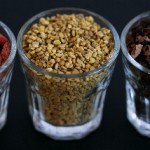
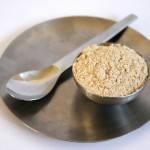
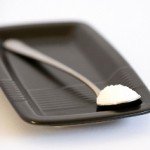
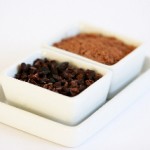
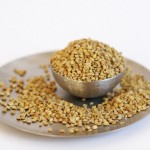

Kat – Help! I hate eating vegetables, how can I get the fiber I need? My diet almost entirely conists of protein, meat, fish, eggs, nuts, and as much fruit as I can keep on hand, but I just don’t like many vegetables (I try to get some in there when I am feeling extremely responsible), especially leafy greens (I like cooked spinach, cabbage, and mustard/collard greens but can’t eat that all the time or it makes me sick). Do I just need to invest in a good supplement?
You either have to just suck it up and eat them, or you need a vegetable greens supp as well as fibre. Vegie nutrients are SO important. One of my clients who also won’t eat much veg uses Phyto pX, it’s great.
http://us.cpoliquin.com/product_p/phyto%20px.htm
Make sure you read my post on fiber, I’ve discussed good supps here as well as what you need to know:
https://thekatrinaruthshow.com/fiber-how-overrated-is-it/
hello! I think I am allergic to whey protein isolate. I am knocking out dairy for the next two weeks to do the test, but in the meantime I have some hemp protein for back up. My concern is that you suggest avoiding carbs in your after workout protein smoothie. What are your thoughts on this one? Is it a green light? it only has 11g protein for four table spoons, its not the greatest taste (hard to drink with out any berries or the like, which seems to be a no no), but it does have a nice 14g of fiber. I disguise the flavour with cacao <3, coconut milk and berries. Im not sure to use after workout, but its better than having dizzy nasuea bloating and pain from whey!
Hmmmm … how much carbs per serve including fiber? There are some great pea/rice proteins as another alternative … SunWarrior makes one
fiber 14g, carbs, 14g, insoluble fiber 13g. wow, peas and rice?! those are ok too?
I haven’t used it myself so I’m not 100% sure, but I think they extract the protein from the peas and rice … it’s not a high-carb product. Eating real peas and rice is not advised!
Awesome post I bookmared it on Delicious and submitted on Digg. Hopefully it sends more visitors your way,also if you have time you can visit my site to give me some advice.